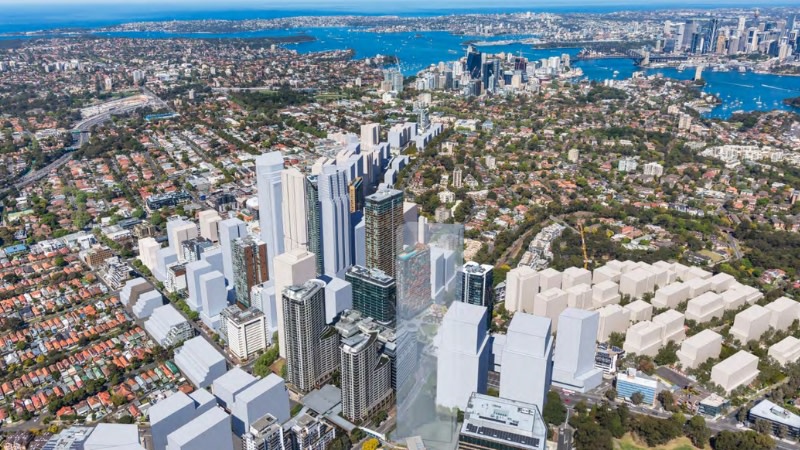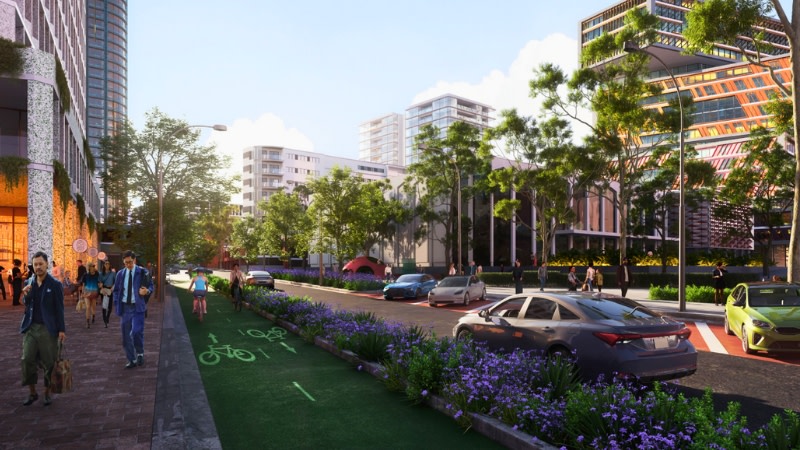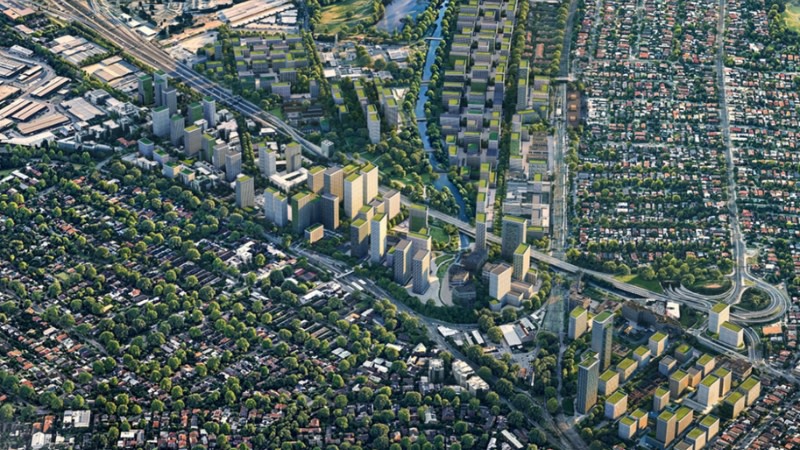
The second tranche of transit-oriented precincts for Sydney has been unveiled by the NSW Government, adding more than 30,000 homes to the potential pipeline.
The rezoning proposals for Bankstown, Crows Nest and Homebush went on exhibition this week and show potential for 31,855 homes.
The announcement followed details of a 30,000 home pipeline across Kellyville, Bella Vista, Hornsby and Macquarie Park Transport-Oriented Precincts Accelerated Precincts (TOD) announced last week.
A rezoning proposal for Bays West is expected to go on exhibition mid next year as the last of eight TOD precincts that were first mooted last year.
Each proposal includes mandatory affordable housing contributions within the housing targets bof etween 3 to 15 per cent to be held in perpetuity and managed by a registered Community Housing Provider.
The rezoning in Crows Nest surrounds the metro and St Leonards stations as well as the Royal North Shore Hospital, implementing recommendations of the St Leonards and Crows Nest 2036 Plan.
Housing across the precinct would be focused within St Leonards Centre and along the spine of the Pacific Highway to the Crows Nest Metro Station which is due to open on August 4.

This would add 3255 homes to Sydney’s lower North Shore in precincts within a 1.2km radius of the metro station.
Half the region has already been rezoned or has an existing proposal with a line of sites to the Mater Gardens expected to change zonings.
Six sites were identified in the proposed plans as having capacity to deliver 15 per cent affordable housing through incentives such as height and floor space ratios.
Public spaces, vibrancy and amenity would be provided through improved walking and active transport links, and direct access to existing open space at Gore Hill Oval, Newlands Park and Hume Street Park.
Housing supply and commercial buildings up to 25 storeys could be built around the metro station, increasing supply around Bankstown city centre.
This would add 12,500 homes to the region south-west of Sydney CBD, where the population is expected to nearly triple by 2036.

The sites around the train line, Bankstown Central Shopping Centre, the new hospital on the current TAFE campus site and around parkland would be intensified.
There were also upgrades for Memorial Park and Griffith Park to better protect the character and amenity of Saigon Place, while creating new potential links between residential areas and Bankstown’s CBD.
About 200ha of land between Sydney and the Parramatta CBD would be rezoned for residential, commercial and recreation use in the Homebush TOD precinct.
This was originally outlined in the Parramatta Road Corridor Urban Transformation Strategy and would add 16,100 homes to the area, the biggest of the rezoning proposals in this round.

Increased density would initially be focused on the western side of North Strathfield Station and along Parramatta Road.
The triangular area between Homebush Bay Drive Queen Street and the train line to Flemington station was identified for a green corridor and high density residential and mixed use.
Building heights intensified to 100m moving towards Homebush and Strathfield stations and dropped to 28 to 42m around Mason Park Wetlands.
NSW planning minister Paul Scully said housing was the largest single cost of living issue in the state.
“Our reforms have been progressive and extensive,” Scully said.
“The TOD Accelerated Precincts are part of a suite of interrelated planning reforms from the NSW Government to build better homes and better communities.
“These additional three precincts will help to deliver more well-located homes, close to transport and amenities, that are also close to new job opportunities as each of the rezonings enable a mix of residential and non-residential land uses, placing good homes and jobs at their core.”
Each of the TOD Accelerated Precincts would also have access to changed planning rules unique to those precincts to accelerate the delivery of homes and jobs.
This included time-limited approvals; a new State Significant Development threshold; exemptions from low-risk concurrence and referral requirements and an alternate design excellence pathway.
The proposals were all in an effort to confront the housing crisis alongside the accelerated pattern book, first stage of the low and mid-rise reforms, additional planning powers for NSW Government agencies to deliver more homes and council league tables.